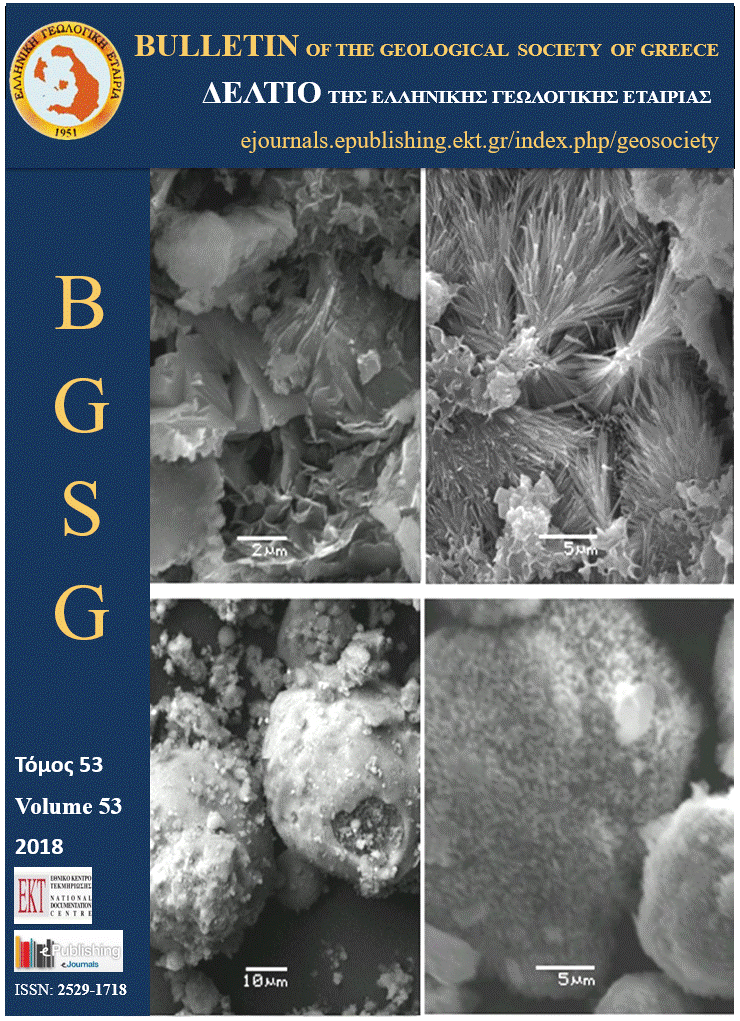The Walls of Eupalinos Aqueduct, Samos Island, Greece. Description, Pathology and Proposed Restoration Measures

Abstract
The Aqueduct of Eupalinos was built in the mid-sixth century B.C, on the island of Samos that lies in the archipelago of the north Aegean Sea. Herodotus (481-425 B.C.) was the first historian to refer to the monument. He names Eupalinos, son of Naustrophus, born in the city of Megara as the engineer responsible for the design and construction of this ancient project. He also describes the method of construction that makes this monument unique: “…One is a tunnel, under a hill one hundred and fifty fathoms high, carried entirely through the base of the hill; its excavation started from two portals (αρξάμενον, αμφίστομον) …”. Egnatia Odos S.A2. in cooperation with the Prefecture of Samos and the Ministry of Culture initiated a multi-discipline design study to protect and restore the monument. The designs included surveying works, geological and geophysical investigations, as well as geotechnical, structural and architectural works. The main component of the aqueduct is the 1036 m long tunnel described by Herodotus. For a length of 165 m the tunnel is protected by dry masonry walls and vaults of remarkable quality, built in the Archaic era. For a length of 63 m it is protected by mortared masonry walls and vaults, built in the Roman-era. These walls at some locations have suffered significant deformation, due to ground pressures, and have partially failed. In order to restore the damaged sections of the wall, its structure was investigated with the use of ground penetrating radar (GPR) and Εlectrical Resistivity Tomography (ERT). These methods indicated the thickness of the wall and to some extent the width of the excavation behind it. The space between the dry masonry of the Archaic wall and the excavation perimeter is backfilled with well stacked partially hewn stones. GPR seems to accurately determine the thickness of the massive building stones (20 to 40 cm thick) that form the wall’s sides. ET seems to accurately determine the interface between the excavation perimeter and the backfill. The thickness of the backfill and the wall was found to range from 60 cm to 200 cm. This most likely suggests that at the protected sections the tunnel excavation suffered significant and systematic ground collapses. This is because the derived tunnel excavation dimensions at that point are much larger than the ones of the unprotected tunnel. The latter combined with the high ground water inflows now present, in the area and the identified poor ground conditions, could justify the decision of Eupalinos to protect the tunnel’s excavation perimeter with the dry masonry walls. Other geophysical and geological investigations identified significant fault zones that cross the tunnel at the previously mentioned locations, where the assumed ground collapses were observed.
A simplified deformation analysis that was carried out using finite element modelling shows that the deformation and the observed wall failures can be roughly explained by assuming poor ground conditions around the tunnel. The protection/restoration measures that were dimensioned for the Archaic type wall include: a) a staged, stone by stone, dismantling of the vaults and partially of the wall, b) supporting the ground behind them with stainless steel rock bolts, steel sets and a concrete mantle, and c) rebuilding the whole at its original “pre-deformed” position. These measures (steel sets, concrete mantle and rock bolts) aim in undertaking the full ground load so that the wall, when rebuilt, will be practically unloaded. Due to the different loading conditions and ground failure mode, the restoration measures designed for the Roman-era wall, aim to remove the rock (load) that fell on the roof arch, to prevent further rock falls and to strengthen the mortared masonry with neutral grouts.
Article Details
- How to Cite
-
Angistalis, G., Dounias, G., Tsokas, G., & Zambas, C. (2018). The Walls of Eupalinos Aqueduct, Samos Island, Greece. Description, Pathology and Proposed Restoration Measures. Bulletin of the Geological Society of Greece, 53(1), 193–228. https://doi.org/10.12681/bgsg.18710
- Section
- Engineering Works and Geological Applications

This work is licensed under a Creative Commons Attribution-NonCommercial 4.0 International License.
Authors who publish with this journal agree to the following terms:
Authors retain copyright and grant the journal right of first publication with the work simultaneously licensed under a Creative Commons Attribution Non-Commercial License that allows others to share the work with an acknowledgement of the work's authorship and initial publication in this journal.
Authors are able to enter into separate, additional contractual arrangements for the non-exclusive distribution of the journal's published version of the work (e.g. post it to an institutional repository or publish it in a book), with an acknowledgement of its initial publication in this journal. Authors are permitted and encouraged to post their work online (preferably in institutional repositories or on their website) prior to and during the submission process, as it can lead to productive exchanges, as well as earlier and greater citation of published work.


